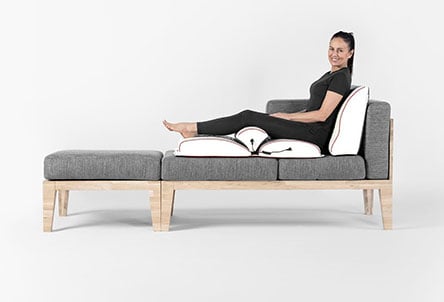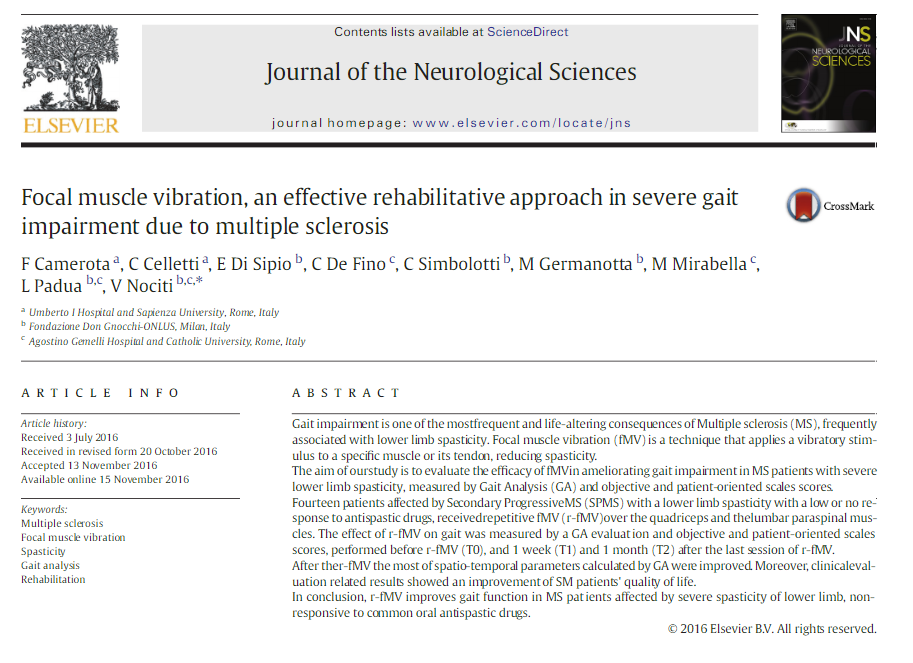Multiple sclerosis (MS) is the most common cause of non-traumatic disability in young adults. Gait disturbance is one of the most common effects of MS, reported by 85% of patients.
This seemingly trivial dysfunction is considered by most patients to be the most challenging, life-changing aspect of the disease. The degree of gait disturbance is related to the degree of deficits at various functional neurological levels. These include loss of muscle strength, degree of spasticity, degree of instability due to imbalance, and degree of sensory impairment. However, as a 2017 study shows, vibrotherapy may prove to be an effective way to improve the functioning of people with multiple sclerosis. Before we get to the results of the study, let’s remind ourselves what MS is and what vibrotherapy is.
Multiple sclerosis (MS) – what is it?
Multiple sclerosis is a chronic inflammatory disease of the central nervous system characterized by demyelination and axonal loss. The cause of the disease is unknown, but, environmental and genetic factors play a key role in its development.Local (topical) vibrotherapy
Local muscle vibration is a technique in which a vibratory stimulus is applied to a specific muscle or tendon. This helps reduce excessive muscle tension – spasticity, which can limit range of motion, impair overall performance, cause malalignment and pain. All this makes it difficult to perform daily activities. As mentioned earlier, local vibrotherapy is a treatment in which a vibratory stimulus is applied to a selected muscle or tendon. In this way, spasticity in that muscle can be reduced regardless of disease or neurological disorder. It is used in various clinical conditions such as:- after a stroke to reduce muscle spasticity and improve global body function,
- spinal cord injuries,
- movement disorders such as Parkinson’s disease or dystonia,
- proprioceptive disorders to improve postural stability and overall balance.

Vibrotherapy versus MS – just 3 days are enough
The 2017 study mentioned in the introduction included 14 patients, diagnosed with multiple sclerosis. All patients suffered from lower limb spasticity with little to no response to medications (Gabapentin, Lioresal, Sirdalud, Valium, Benzodiazepine). The vibrotherapy apparatus was placed bilaterally on the quadriceps muscle, close to the attachment of the rectus femoris muscle, and on the paraspinal muscles in the lumbar spine. The therapy was applied for 30 minutes for 3 consecutive days. The apparatus operated at a low amplitude of 0.2-0.5 mm and a frequency of 100 Hz. Thus, the action of vibrotherapy below the threshold value, used two mechanisms: perception of spurious movements and induction of tonic vibration reflex (TVR). After the treatments, a significant increase in mobility was noted in the hip, knee and ankle joints. This was associated not only with a reduction in spasticity, but also with the effect of the vibratory stimulus on the delivery of sensory stimuli to the Central Nervous System.
Vibrotherapy – hope for MS patients?
The application of vibrotherapy treatments to the muscles of the thigh and back makes it possible to improve the functional stimulation of the nerves responsible for various motor activities. After the treatments, an improvement in gait is noted by reducing spasticity in patients with multiple sclerosis. Even in those who do not respond to oral antispastic drugs. In addition, vibrotherapy reduces pain and improves quality of life, as evidenced by further scientific studies. After an experiment conducted at the University of Konstanz, Germany, it was found:- Increased patients’ distance traveled in 6 minutes by almost 15% in the vibration-trained group, compared to 3% in the group without vibration training (a 4.5-fold improvement over the control group).
- Respondents in the vibration-treated group reported no side effects during the program.
- Camerota F, Celletti C, Di Sipio E et al. (2017) Focal muscle vibration, an effective rehabilitative approach in severe gait impairment due to multiple sclerosis. J Neurol Sci 372: 33–39
- Effects of whole-body vibration training on physical function in patients with Multiple Sclerosis Christoph Hilgers, Annegret Mundermann, Hartmut Riehle, Christian Dettmers , NeuroRehabilitation 32 (2013), 655-663,doi: 10.3233/NRE-130888




